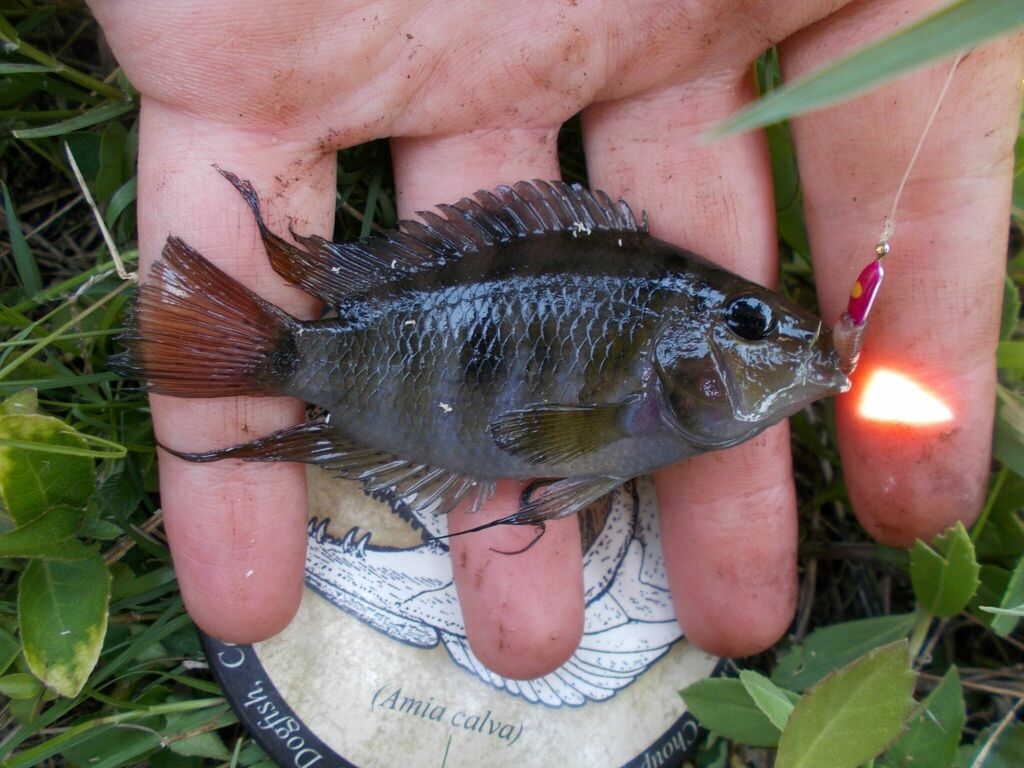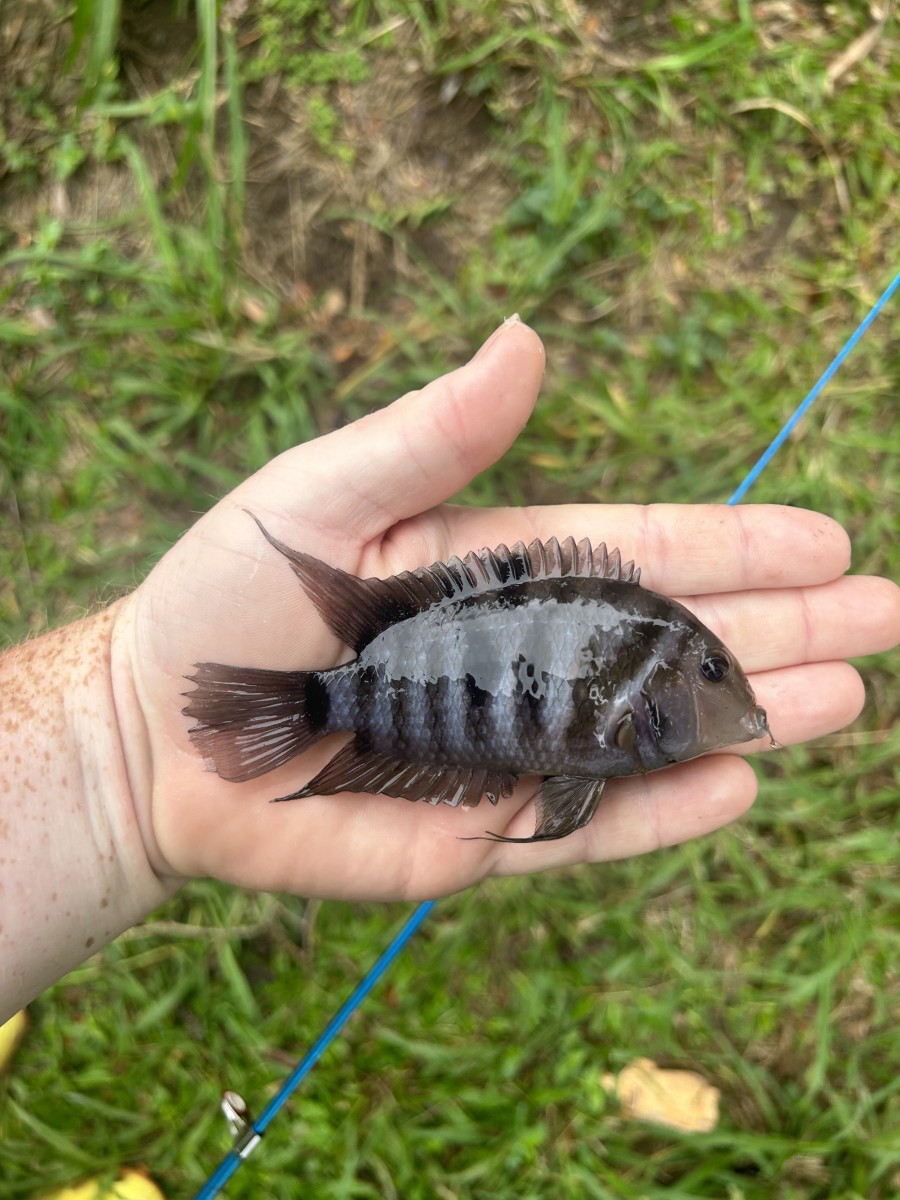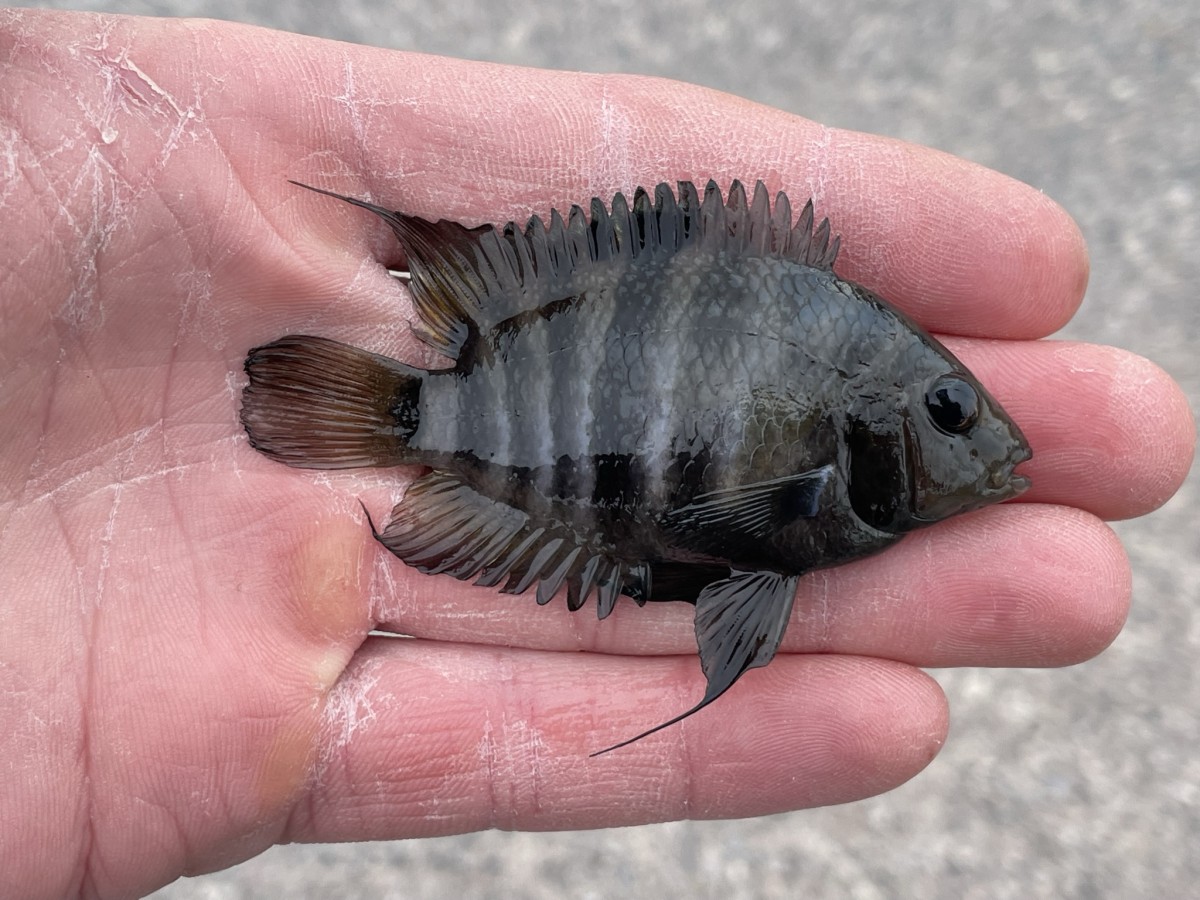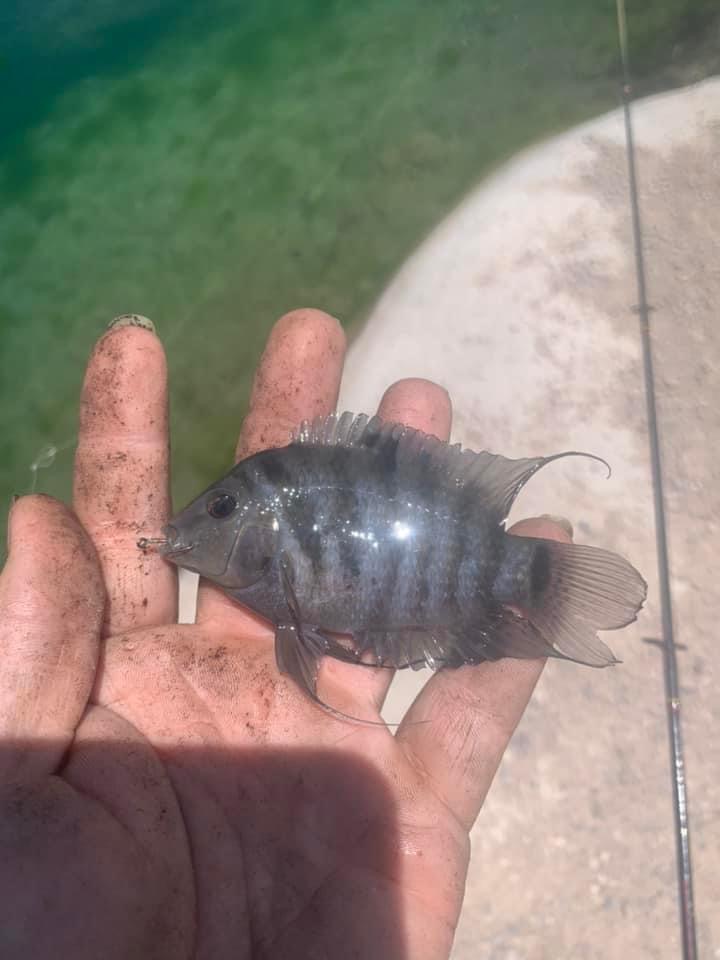Convict cichlid
(Amatitlania nigrofasciata)

Classification
General data
Description
The wild-type of the species has 8 or 9 black vertical bars on a blue-grey body, along with a dark blotch on the operculum. Juvenile convict cichlids are monomorphic until they reach sexual maturity. The male is mostly gray with light black stripes along the body. Males are larger than females, and they have more pointed ventral, dorsal and anal fins which often extend into filaments. In addition, older males frequently develop vestigial fatty lumps on their foreheads.
Unusually for fish, the female is more highly colored. She has more intense black bands across the body, and pink to orange coloration in the ventral region and on the dorsal fin.
The maximum standard length has been reported to be 10 centimeters, with total length near 12 centimeters (4.7 in). The body weight of the fish is about 34–36 grams (1.2–1.3 oz).
Range and habitat
Convict cichlids are native to the lakes and streams of Central America. In particular, the species occurs along the eastern coast of Central America from Guatemala to Costa Rica, and on the western coast from Honduras to Panama. Convict cichlids prefer moving water, and are most frequently found in habitats with cover in the form of rocks or sunken branches. At four natural habitats of the convict cichlid in Costa Rica, the pH was found to range from 6.6–7.8, while carbonate hardness (KH) ranged from 63 to 77 ppm CaCO
Feral populations
The species also occurs outside its natural range, even being found in Australia, where it can be found in the warm effluent of power stations in Victoria, and in tropical Queensland. It has also been captured in Perth, Western Australia, although this initial capture also resulted in its eradication. In addition to Australia, the species has been introduced to Réunion, Japan, Mexico, Colombia, Taiwan, and the USA.
















